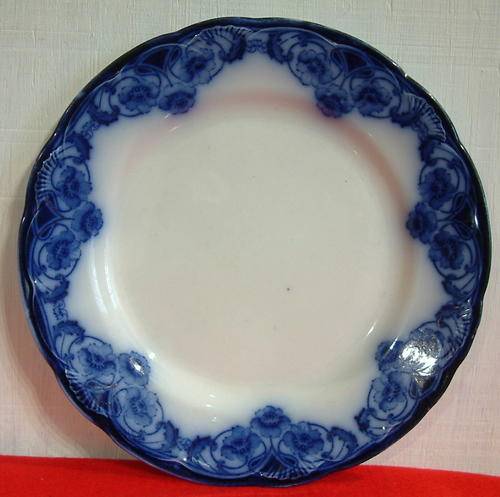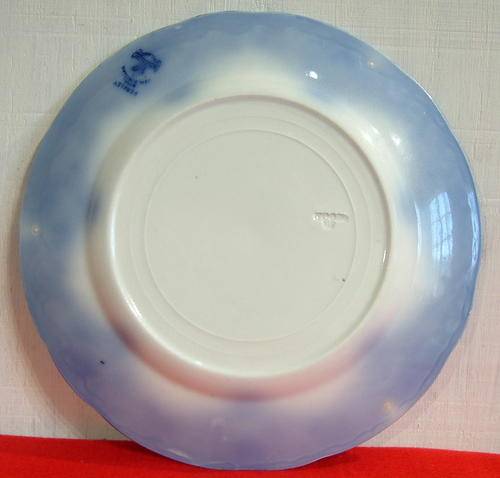__Flow-Blue_1.JPG)
Antique Victorian 'Flow-Blue' Plate Woods and Sons 1910 Ref. ca1
Check my rate
| Main centres: | 1-3 business days |
| Regional areas: | 3-4 business days |
| Remote areas: | 3-5 business days |
__Flow-Blue_1.JPG)
| Main centres: | 1-3 business days |
| Regional areas: | 3-4 business days |
| Remote areas: | 3-5 business days |


The term 'Flow Blue' is used to describe a blue transfer print in which the ink has been allowed to run into the glaze, producing a blurred or halo effect. It is produced by introducing a chemical such as lime or ammonium chloride into the glost oven at the time glazing takes place. Ceramics showing the 'flow blue' effect were immensely popular in the Victorian times and have become a major collector item today. Originally first conceived in Staffordshire, England, during 1825, it soon became the major source for this ware and a great export commodity especially to the States. Although flow blue originated with the 'blue' color (derived from Cobalt) other colors made their appearance, but, the deep, rich blue and the 'Mulberry" purple-blue are the most sought after colors.
Flow blue can be divided into three distinct groups.
Early Victorian Flow Blue (1830-1860) Basically on ironstone, in intense cobalt blue, with designs which usually covered the entire piece. Many designs were similar to the Oriental patterns imported from Canton and Nanking.
Mid Victorian Flow Blue (1860-1885) Flow blue patterns were more elaborate than earlier styles, less angular and more scalloped. They often incorporated floral or nature scenes, with many pieces being trimmed with gilding.
Late Victorian Flow Blue (1885-1920) A lighter, 'semi-porcelain' had replaced the heavier ironstone, and, far less of the surface was covered by the design. Beading and embossing on the rim was popular. Floral designs were still popular but the Art Nouveau influence was seen in later pieces.
As the public changed their ideas on ceramics, by 1910, most companies had stopped making Flow Blue.
__Flow-Blue_2.JPG)
__Flow-Blue_4.JPG)
__Flow-Blue_3.JPG) It is interesting to note there are three small spots on the back, this would have been where the bowl was stacked on the props in the furnace
It is interesting to note there are three small spots on the back, this would have been where the bowl was stacked on the props in the furnace
Price R190.00
Post R50.00
Terms: We offer a strict three-day approval period from the date the parcel reaches you. Refunds/credits are based on the cost of the article, NOT including delivery charges. Please advise us within this period whether you would like to return any article for a refund/credit. Although we pride ourselves in our packing, the buyer remains responsible for loss, non-arrival or damage to goods being sent to, or returned.